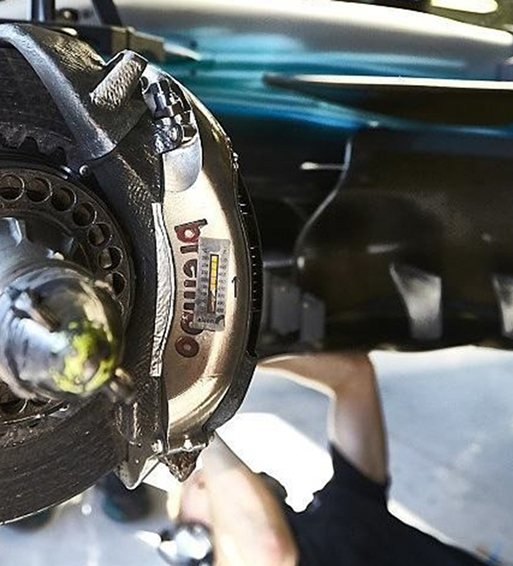BRAKING FORCE: UP TO 50% MORE
The term 'braking force' means the quantity of energy dissipated during braking. This was the value that grew the most in the last decade, as we'll show you in the examples we are about to give you.
The St. Devote is the first corner after the starting grid at the Monaco GP and is often the stage for spectacular crashes. The braking force of each single-seater here in 2009 was 1,588 kW; this year the average braking force was 2,175 kW, which is a 37% increase.
Even greater variations in the braking force are found on other tracks: In 2009 at the Japanese GP, the value was just over 2,000 kW on the corner following the finish line and this year it was about 3,000 kW, which is 50% more.
DECELERATION: UP TO 23% MORE
By turning to higher performing Brembo braking systems, the deceleration experienced by drivers has also gone up and on some stretches, it is greater than what astronauts experience when they return to Earth.
On the Variante del Rettifilo, the first chicane on the Monza circuit (Italian GP), the single-seaters assured a maximum deceleration of 5.1 G in 2009 and now they guarantee 5.6 G. The increase is about 9.8%, which is consistent with what is registered on most of the other corners in the world championship.
ESome tracks register greater variations, like Spa-Francorchamps (Belgian GP). During braking on the former Bus Stop, the maximum deceleration went up from 5.2 G to 5.8 G and on La Source it leaped from 4.3 G to 5.3 G. In the first case, the increase was 11.5% and in the second, it was 23%.

